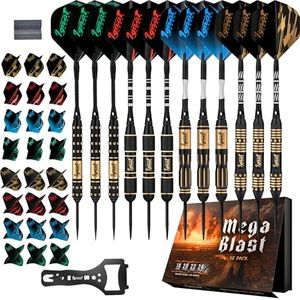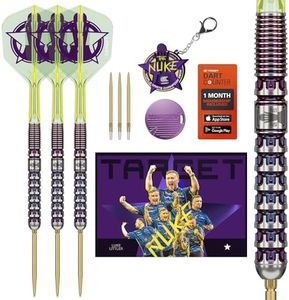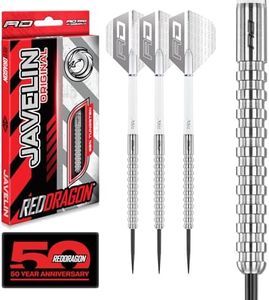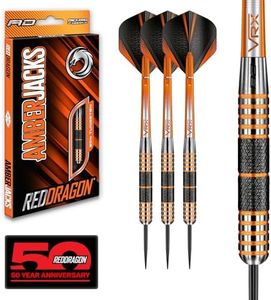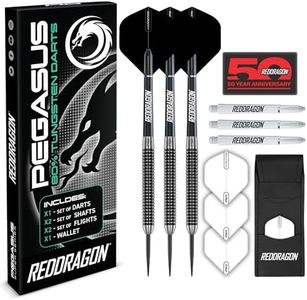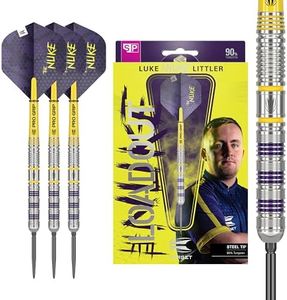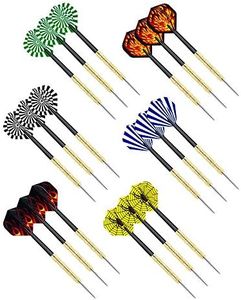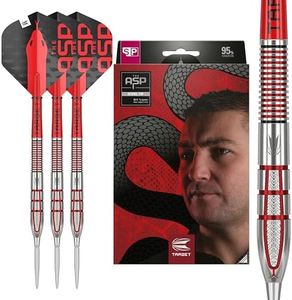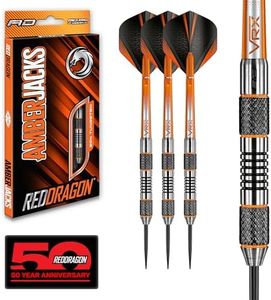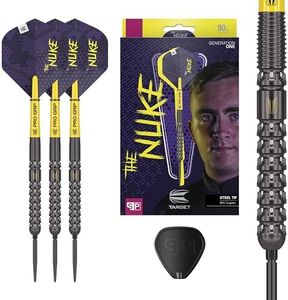We Use CookiesWe use cookies to enhance the security, performance,
functionality and for analytical and promotional activities. By continuing to browse this site you
are agreeing to our privacy policy
10 Best Steel Tip Darts
From leading brands and best sellers available on the web.Buying Guide for the Best Steel Tip Darts
When choosing steel-tip darts, it's important to consider how the dart will suit your style of play, comfort, and experience level. The right dart can help improve your accuracy and enjoyment of the game. Think about how each part of the dart (such as the barrel, shaft, and flight) works together, and how it fits your hand and playing habits. Take time to hold and try out different shapes and weights if possible, as personal feel is a big part of picking the best darts for you.Barrel MaterialThe barrel is the part of the dart you hold, and it is typically made from materials like brass, nickel-silver, or tungsten. This material affects the dart's weight, durability, and price. Brass barrels are lighter and more affordable but tend to wear down faster. Nickel-silver offers a bit more durability and is also lightweight. Tungsten is the top choice for serious players because it allows for slimmer, heavier darts that are very durable and resist wear. If you are playing casually, any material will work, but if you plan to improve or play often, tungsten is a smart option because it helps with tight groupings on the board.
WeightDart weights usually range from 18 to 30 grams for steel-tip darts. Lighter darts (18-22 grams) require a slightly firmer throw and may suit players with a faster, more controlled release. Heavier darts (24-30 grams) are often easier to control for beginners and provide a steadier flight, but they travel a bit slower. Testing a few different weights will show you what feels best in your hand—choose the one that allows you to throw consistently and accurately without too much strain.
Barrel Grip and ShapeThe barrel can have different textures—like smooth, knurled, or ringed—to improve grip. Some are thin, while others are thick, and they might be straight or have contours to fit fingers. A good grip prevents slippage and helps you release the dart smoothly. If your hands sweat, a rougher or more pronounced grip will help. The shape is also personal—try various shapes and grips to find what fits comfortably in your hand and supports a controlled throw.
Shaft Length and MaterialThe shaft connects the barrel to the flight, and its length can affect the dart’s balance and how it flies. Shorter shafts make darts more front-heavy and can fly in a more parabolic arc, often suiting players who grip near the front. Longer shafts can add back-weight and offer a steadier flight, helpful for those who hold the dart at the rear. Materials include plastic (light and affordable), aluminum (sturdier and heavier), and sometimes carbon fiber (ultra-light and strong). Choose a shaft that balances well with your preferred barrel and helps the dart land at your ideal angle.
Flight Shape and MaterialFlights are the fins at the back of the dart that help stabilize it in the air. Common shapes include standard (wider, stabilizing slower throws) and slim (for faster throws and tighter grouping). Materials are usually plastic or nylon, which are durable and keep their shape. Pick a flight that matches your throw speed—bigger flights for slower or lofted throws, smaller or slim flights for fast, direct throws. Experiment to find which lets your darts land consistently and at your favored angle on the board.
